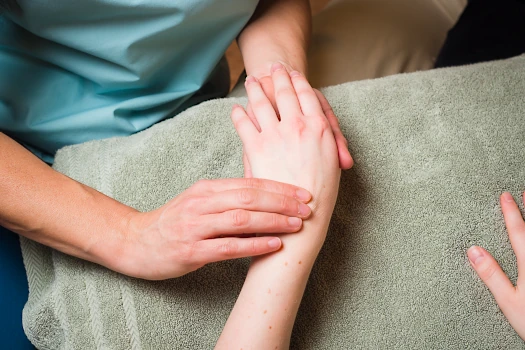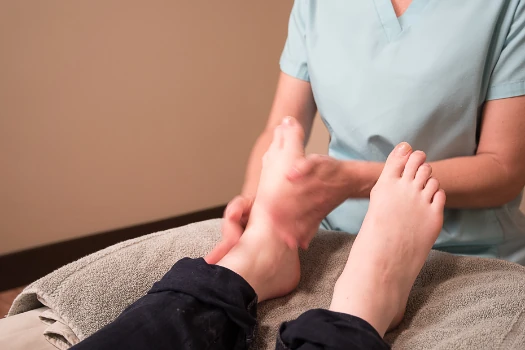Finding Relief From Carpal Tunnel Syndrome
Monday, November 26, 2018, 03:50 PM
What is Carpal Tunnel Syndrome?
Carpal Tunnel Syndrome (CTS) is a condition that affects the hands, arms and wrists. It is caused by pressure on the median nerve, which is the nerve that passes through the carpal tunnel in the wrist to the hand.
The pressure is what causes the typical symptoms of carpal tunnel syndrome, including numbness and tingling in the hand and fingers. CTS can be caused by underlying health problems (e.g. diabetes and rheumatoid arthritis), long-term repetitive activity (e.g. desk work), or simply the anatomy of the wrist.
Symptoms of CTS are most commonly seen in the parts of the hand where the median nerve runs, including the thumb, index finger, middle finger, and half of the ring finger.
A different nerve controls the pinky finger, so if symptoms do not affect that finger, it may indicate CTS. The onset of carpal tunnel syndrome is often slow and can worsen over time.
Carpal tunnel syndrome is a chronic condition and may require surgery to provide full relief. However, various holistic health practices can provide relief of symptoms and be used as a preventative measure to slow down the damaging effects that cause CTS.

Massage Therapy
Massage therapy is an effective way to help relieve CTS-related symptoms and can be used as a preventative measure.
Massage therapy can help treat CTS by reducing inflammation, pain, and numbness in the carpal tunnel. This happens by lengthening the muscles and fascia in the neck, shoulders, arms, wrists, and hand.
Deep tissue massage can be used to stimulate trigger points and reduce the tension in the soft tissues of the shoulder, arm, hand and wrist. It can also help increase joint mobility in those areas.
Myofacial cupping on the hand, used in combination with massage therapy, is another effective way to reduce muscle tension that may be contributing to symptoms associated with CTS.
Reflexology
Reflexology can help provide relief for the symptoms associated with carpal tunnel syndrome by unlocking the joints in the wrists and reducing the pressure on the median nerve to help it move freely.
The reflexologist will use a variety of techniques and activate various reflexology points in the hand, which can help reduce tension in the areas associated with CTS.
Reflexology can also help treat underlying conditions that may be contributing to CTS by reducing inflammation in the body, promoting circulation in the areas affected by CTS, and improving overall client health.
Stretching and Exercises
There are various stretches and exercises that can help reduce and prevent symptoms associated with carpal tunnel syndrome.
Stretching the shoulders and neck can help prevent CTS by relieving muscle tension in these areas and moving down the arm. Stretching the forearms, wrists, and hands can help treat the symptoms associated with CTS by reducing tension and opening the passageway to the median nerve.
There are also different exercises to help treat CTS symptoms. If you notice your hand or wrist going numb or feeling tingly, take a moment to shake your hands out to get instant relief.
Exercises to strengthen the wrist can also help, such as stretching it up and down. Repeatedly making a fist and then fanning out the hand can help strengthen the wrist and reduce CST symptoms. Consult your practitioner before trying any exercises or stretches to ensure they are being done properly.
Yoga
Practicing yoga can stretch out areas of the body that are affected by capel tunnel syndrome, including the forearms, wrists, and hands.
Yoga can also be used as a preventative measure to stretch parts of the body that may contribute to CTS, including the back, neck and shoulders. Tension in those areas can strain the forearms and wrists, contributing to CTS.
Specific poses in yoga are especially effective in reducing symptoms associated with CTS. Eagle Pose and the hand position in Namaste open the forearm and reduce pressure on the median nerve.
Mountain pose is key for bringing awareness to posture, something that many people who have stationary daily activities often struggle with. Applying this knowledge of posture to seated activities can help minimize strain on the soft tissues in the head, neck and shoulders.
Yoga's focus on posture, body alignment, and stretching all can help begin healing the symptoms associated with CTS.
Along with using different holistic health practices to help treat the symptoms associated with CTS, simple lifestyle changes can be made to reduce your chance of developing symptoms.
Wrist braces or splints can be worn while doing repetitive work to take the strain and pressure off the median nerve. However, it is important to consult with your doctor about symptoms before receiving treatment.

